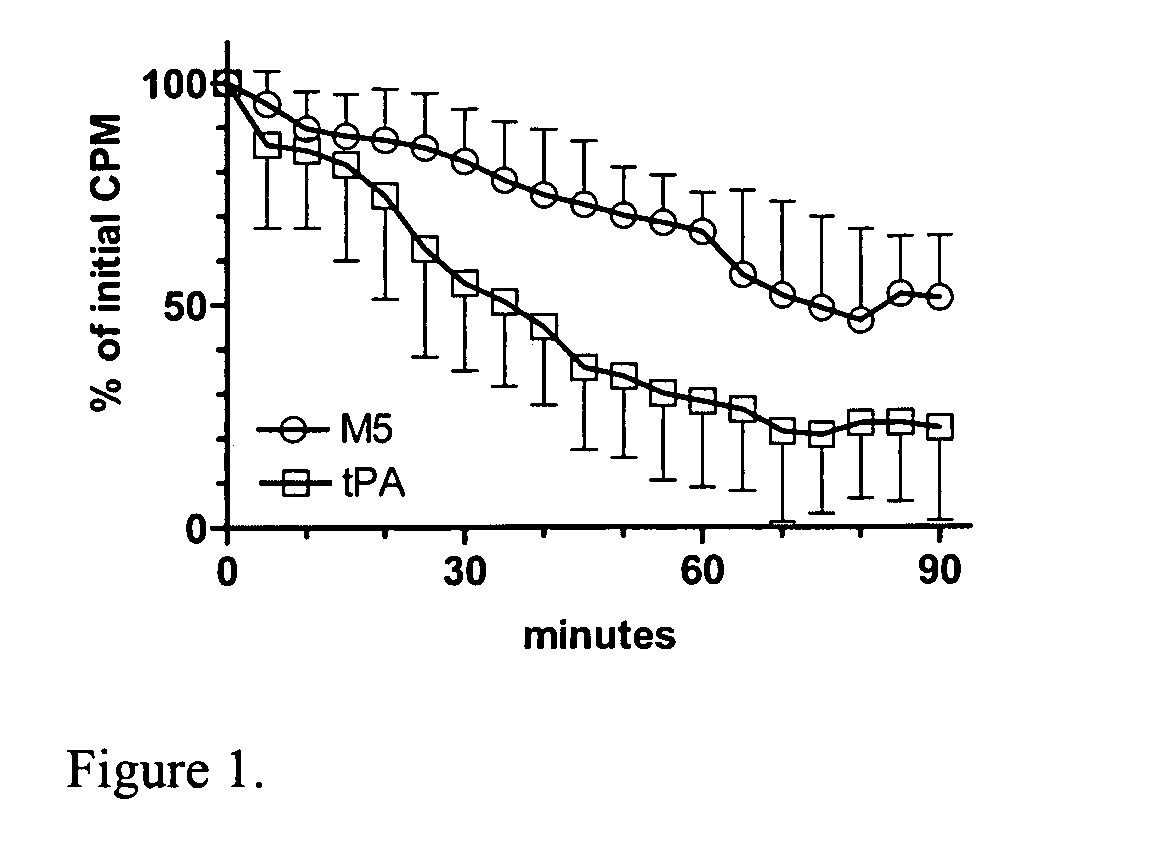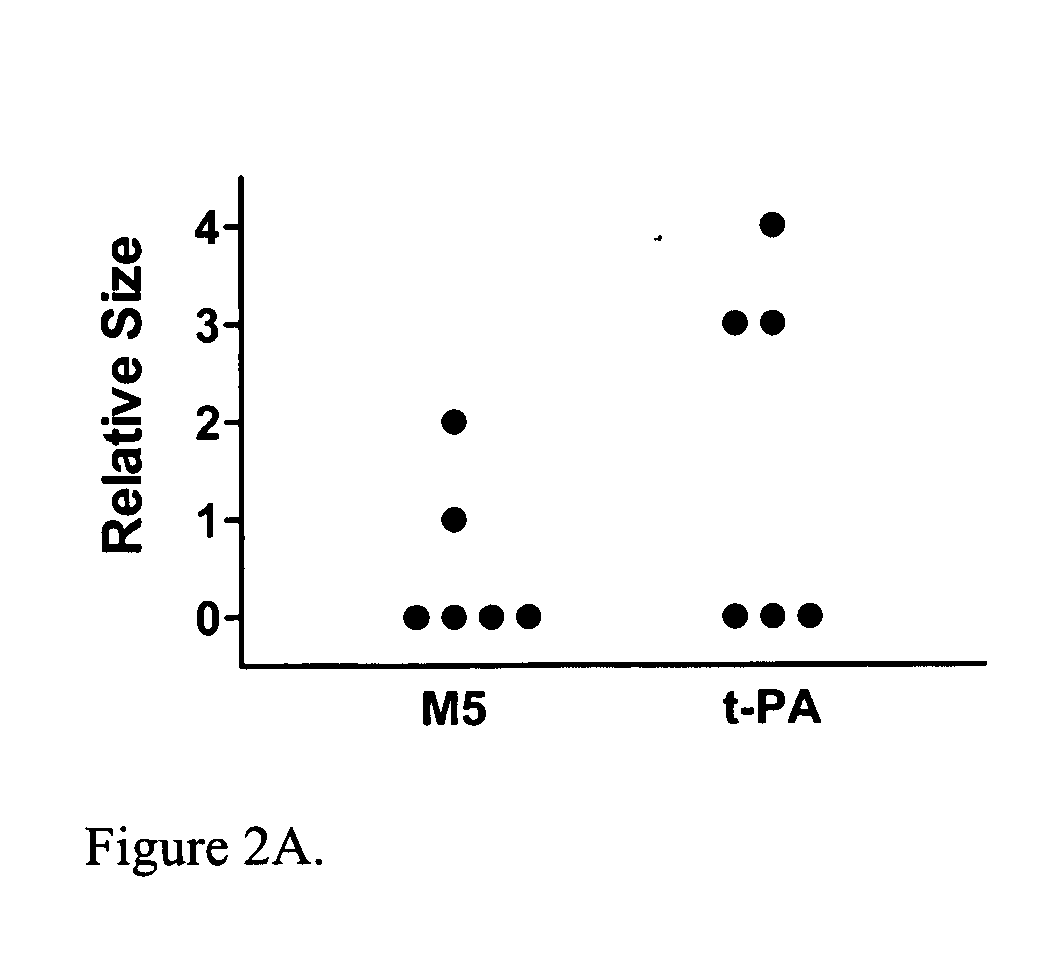C-1 inactivator inhibits two-chain urokinase mutant and limits hemostatic bleeding during thrombolysis
- Summary
- Abstract
- Description
- Claims
- Application Information
AI Technical Summary
Benefits of technology
Problems solved by technology
Method used
Image
Examples
Embodiment Construction
[0016]The present invention relates to a novel method of reducing bleeding during fibrinolysis treatment. The method is based on the discovery that C1-Inactivator has the ability to inhibit the formation of the two-chain prourokinase mutant tcM5. Prourokinase (ProUK) is a thrombolytic drug with the undesirable side effect of being vulnerable to spontaneous activation in plasma during fibrinolysis. M5 is a single site mutant of prourokinase developed to limit fibrinolysis to a local target area and to reduce hemostatic fibrinolysis. M5 differs from prourokinase by a single amino acid substitution at position 300, where the amino acid Lysine has been replaced by Histidine. C1-inactivator is a previously unknown plasma inhibitor of UK. C1-inactivator is a serine protease inhibitor normally present in blood at levels ranging from 0.25-0.45 g / l. Deficiency and dysfunction of this protein have been associated with diseases such as hereditary angioedema.
[0017]As discussed in the Background...
PUM
| Property | Measurement | Unit |
|---|---|---|
| Mass | aaaaa | aaaaa |
| Concentration | aaaaa | aaaaa |
| Mass flow rate | aaaaa | aaaaa |
Abstract
Description
Claims
Application Information
 Login to View More
Login to View More - R&D
- Intellectual Property
- Life Sciences
- Materials
- Tech Scout
- Unparalleled Data Quality
- Higher Quality Content
- 60% Fewer Hallucinations
Browse by: Latest US Patents, China's latest patents, Technical Efficacy Thesaurus, Application Domain, Technology Topic, Popular Technical Reports.
© 2025 PatSnap. All rights reserved.Legal|Privacy policy|Modern Slavery Act Transparency Statement|Sitemap|About US| Contact US: help@patsnap.com



